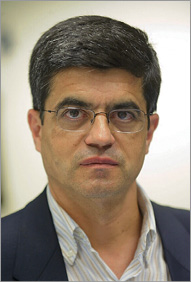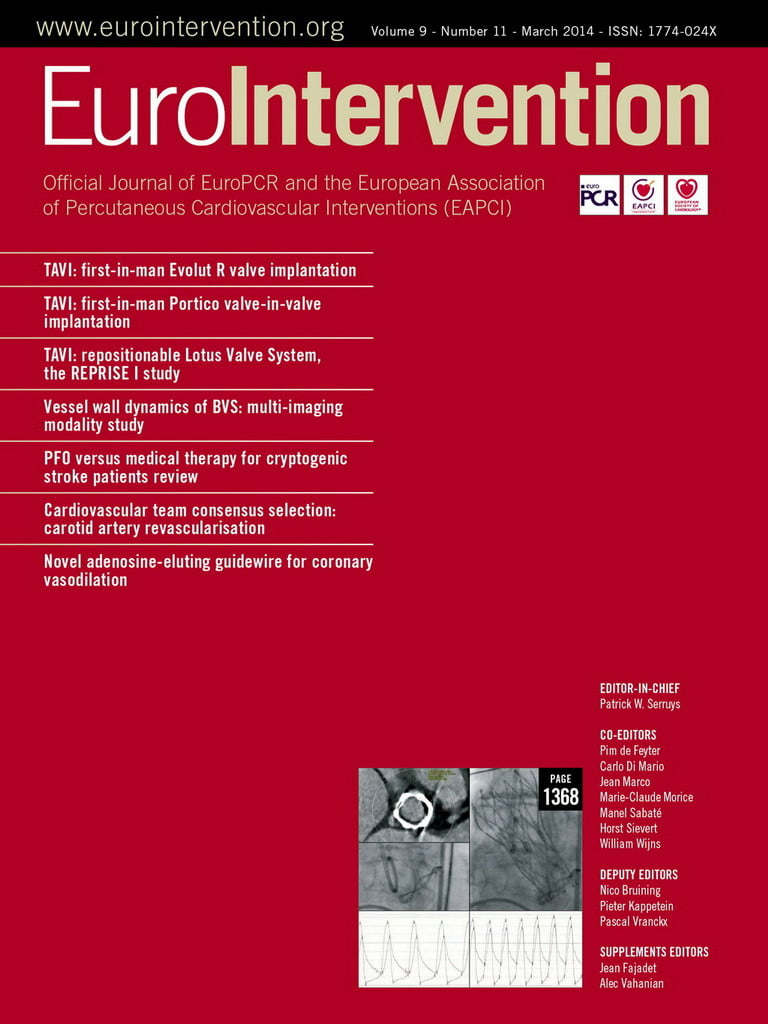NEWS
■ The Stent for Life survey data for 2010/2011 evaluating contemporary status on the use and type of reperfusion therapy in patients admitted with STEMI in ESC member countries recently published in the European Heart Journal shows that large variations in reperfusion treatment are still present across Europe.
■ Visit ESC Congress 365: your free access to the ESC Congress content all year long. View thousands of webcasts, slides, abstracts and reports from the world’s leading cardiology congress – online, anytime, without subscription!
■ The EAPCI, a definitely growing community! As of January 2014, the EAPCI has 5,295 members from 123 countries! 929 new members with the top 5 increases as follows (compared to 2013): Italy 357 members (+17.8%); Germany 352 members (+42.5%); India 342 members (+14.4%); Egypt 300 members (+21.9%); United Kingdom 298 members (+19.2%)
Join the association online www.escardio.org/EAPCI
EAPCI Focus on the Portuguese Association of Cardiovascular Interventions (APIC)
An interview with the President, Hélder Pereira
What does the EAPCI membership mean for a national society?
Portuguese interventionalists occupy important positions within the EAPCI; however, due to the fact that our association has only existed since 2010, the overall number of Portuguese EAPCI members is still relatively low. Nevertheless, the APIC shares the same values of clinical and scientific excellence with the EAPCI. The mutual cooperation between national societies and the EAPCI is the key for the success of both groups. One of the missions of the APIC is to encourage Portuguese interventionalists to join the EAPCI and one area in which we wish to cooperate more fully is in education. For instance, the ESC eLearning platform is a tool which is strongly innovative and very useful for teaching new interventionalists. The Portuguese Medical Board has agreed to include the ESC eLearning platform in our training curriculum and has officially recognised and formalised interventional cardiology as a subspecialty within cardiology.
What are the current issues related to the national society?
As we said earlier, our association is relatively young: this coming April we will be celebrating our 4th year. Besides conducting our annual meeting and the sub-meetings of the various working groups, the activity of the APIC is particularly committed to three lines of action that we consider strategic, namely the working groups, the national interventional cardiology registry and the Stent 4 Life initiative. Furthermore, we are committed to being an effective and active partner with government authorities in decisions concerning interventional cardiology.
With respect to the working groups, over the last two years we have constituted several working groups in specific areas of concern for interventional cardiologists: physiologic assessment, invasive and non-invasive imaging, structural heart disease, renal denervation, aortic valves, radiation protection, teaching and education and young investigators. These groups have been working very hard, producing real results in medical research. We have continued to work this year, with the keen support of industry, in defining a clear code of conduct for our collaboration. We are also launching training grants for young interventionalists.
Our second strategic line is our national registry of interventional cardiology which currently involves all Portuguese centres. This registry is not an activity registry, but is patient-based, meaning that all data (patient demographics, materials, logistics, outcomes) are recorded and exported to Coimbra, where the database is managed. Naturally, these data are not only interesting from the point of view of quality control, but allow us, for instance, to compare our work and daily practice here within Portugal, as well as with that of our peers in other countries. This registry has the huge potential of being a superb tool from both the clinical as well as the scientific standpoint. We have approached both government authorities and industry in order to achieve partnerships that may benefit from these data. Setting up and maintaining this registry costs a considerable amount of time and energy, but today we are starting to reap the rewards of our endeavours. The registry currently has over 50,000 patients. However, we still have issues to resolve such as incomplete follow-up, as not all centres have the required data. Clinical data until hospital discharge, however, are very reliable and robust. We are also working on a very interesting platform from the Ministry of Health. This platform is built with the patients in mind. In the future, patients will be able to access the platform to see which centres are performing well and view comparative data between these centres. Within this platform, a special section will remain only accessible to interventionists from specific centres so that we can compare our personal performances with other colleagues within our own centre, but not other centres. In the future, patients will also be able to comment on both their treatment and physicians, with the goal of making this a true partnership with our patients.
Finally, we consider our participation in the Stent 4 Life initiative. About a decade ago, Portugal was performing very poorly in primary angioplasty when compared to other European countries. With the arrival of the Sent 4 Life task force, we were able to identify three areas where we needed to improve our performance. The first was to improve patient recognition of their symptoms of STEMI; secondly, we needed to decrease the time delay in seeking medical attention and, lastly, we needed to improve awareness of our national emergency number, “112”, as it was shown that only a minority of patients were using it. On another level, we saw that at this time there existed a weak coordination between the National Hospital Emergency Medical System (EMS) services and interventional cardiology centres. After two years of Portuguese participation in the Stent 4 Life initiative we were able to increase the percentage of patients who called “112” as well as increasing the number of patients treated to the point where we now exceed 300 patients per million per year. Our action plan contained, as well, a strong public campaign raising awareness of STEMI and we also initiated a partnership with the National Hospital Emergency Medical system where EMS directly contacts and sends the ECG to the cathlabs.
It is also interesting and of note that APIC is composed of members who are very familiar with the reality of our cardiology practice through special training and experience in management. These special members share our vision and are instrumental in helping us communicate with governmental authorities.
Concerning our fellows, while our economic situation is naturally very difficult and challenging we are still fortunate in that a great majority of interventional fellows have found positions here in their home country. Still, there are others who choose to go abroad to further their experience. From the point of view of clinical trials, since our country is small and does not have large centres, we believe that by collaborating with other centres within Portugal we can create very interesting and very large data set studies. By using this approach, we hope to attract bigger international studies which can, in turn, become involved with a greater number of Portuguese centres for their research.

Hélder Pereira, President of the Portuguese Association of Cardiovascular Interventions (APIC)
![]()
President: Hélder Pereira
Past President: Leitão Marques
Contact details: [email protected]
Website:http://www.spc.pt/spc/ms/ms.aspx?ID=SSPC02
Upcoming annual meeting:Coimbra, 22-23 November 2014
Founded: 2010
Members: 146 members from 22 hospitals
EAPCI members: 47

